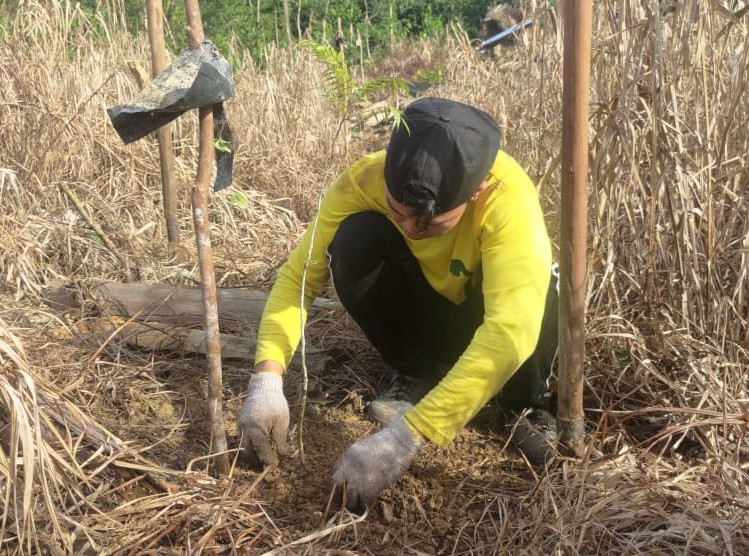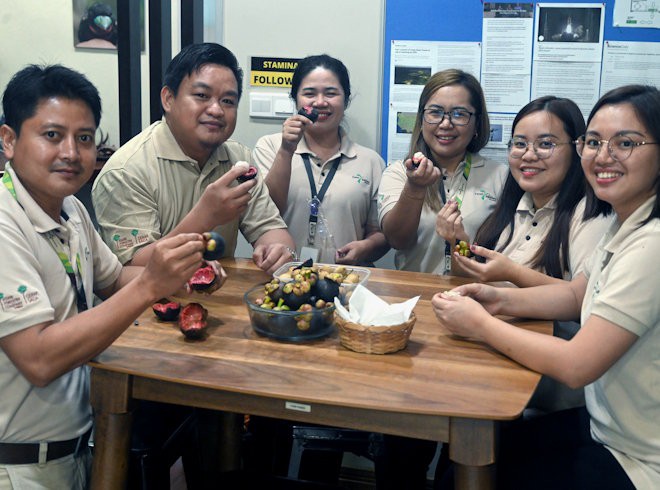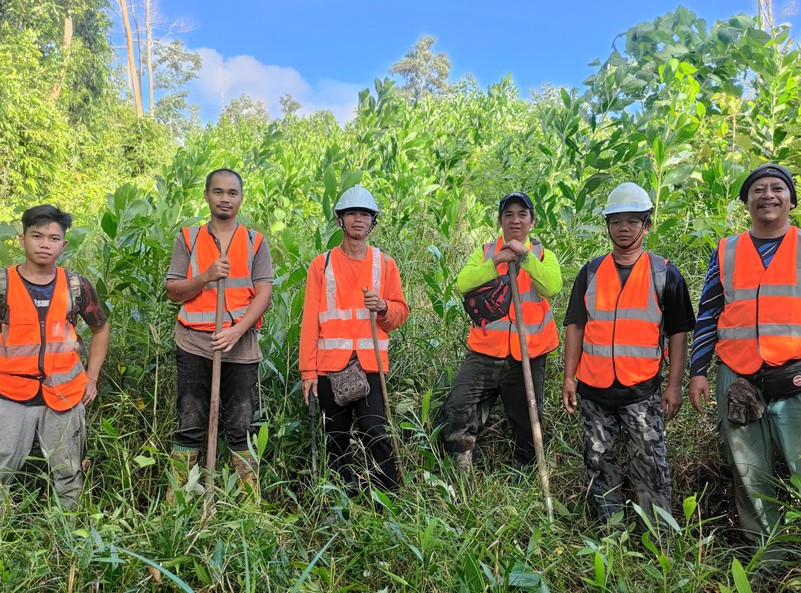Forest Rehabilitation: A Path to Recovery

2023-05-08
Gerak Saga was granted stewardship over the Bengkoka and Tambalugu Forest Reserves in 2015. Both forest reserves are populated by wild Acacia mangium regrowth as a result of previous clearing, some commercial planting and repeated wildfires, with less than 5% of the Bengkoka FR remaining under natural forest. Although the area has been designated for ITP development, Gerak Saga committed itself to the restoration of natural vegetation within the catchment and riparian zones of the FR in a multi-decade effort, titled the Forest Restoration Project.
Despite being heavily degraded, the identified restoration areas are ecologically important, providing essential resources including watershed areas for nearby local communities and wildlife, gene pools, and wildlife habitats. Consequently, approximately 965 ha has been set aside as conservation areas for rehabilitation.
It’s important to note that forest restoration is a challenging, multistage, site specific process. If left to its own devices, nature would likely complete the process unaided, albeit very slowly. However in partnership with nature and through careful interventions, we can accelerate the underlying processes. So, Gerak Saga is developing and implementing methods and materials for this purpose and a 30-year Forest Rehabilitation Plan, for the period 2020 to 2050 has been compiled to guide our efforts. The rehabilitation work includes a series of reasonable measures aimed at forming more natural site conditions through enrichment and vegetation management.
The specific objectives of the Forest Restoration Project are as follows:
- i. To enhance and enrich ecological values in the sites
- ii. To improve habitat functional quality, especially for slower growing tree species
- iii. To improve the spatial extent and connectivity of natural areas
- iv. To suppress competition from invasive species, especially wild Acacia spp.
Much progress has been made even prior to the curation of the rehabilitation plan, including:
- Since 2016, we have collected seeds and wildlings of native species and local fruit trees both inside and outside the project area, and with the kind assistance of the Sabah Forestry Department’s Forest Research Centre (FRC) and the Tropical Rainforest Conservation and Research Centre (TRCRC).
- We have established two natural species seedling production areas and have produced over 8,500 seedlings.
- Five individuals (a restoration team) from the surrounding Gerak Saga community were hired to carry out the enrichment planting efforts.
- Our team initially attended training on indigenous species practices at TRCRC (2015), and dendrology training at Danum Valley Field Centre (2017). Staff now attend frequent internal training to keep pace with evolving best operating practices.
- The first indigenous species trial plot was planted with the aid of Raleigh International Volunteers in 2015. Since then, an area of approximately 8 ha has been planted with indigenous and local fruit trees.
- To ensure the survival of the planted trees, periodic maintenance is performed at the established enrichment planting sites.
Although the main objective of the project is to restore the degraded conservation areas, we see that the success of this project is not only from the success to restore the forest ecosystems. Employment opportunities, local communities livelihood improvement, and capacity building are just a few of the other positive accomplishments from this project and believe that benefiting the local communities is just as important as restoring the ecosystem and sustainably growing tomorrow’s wood supply.

